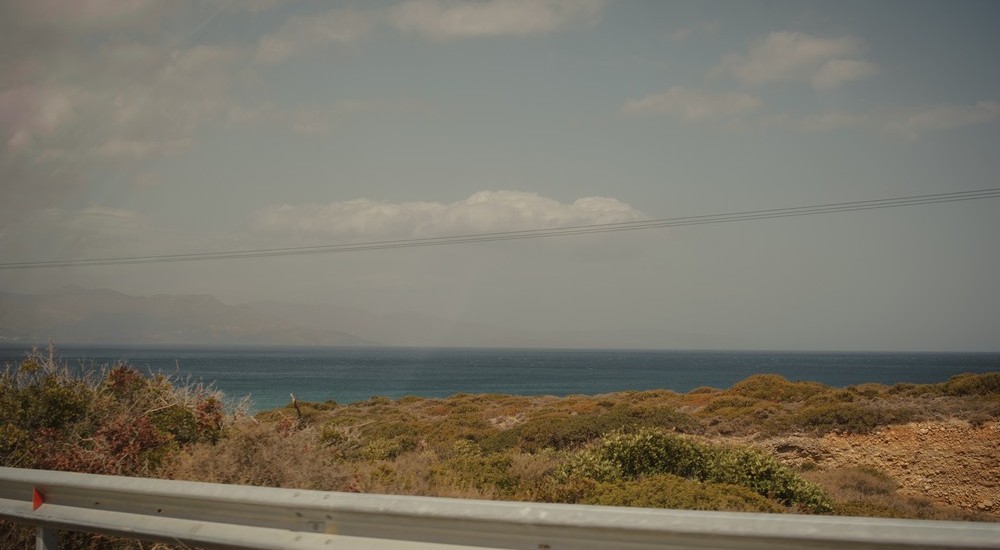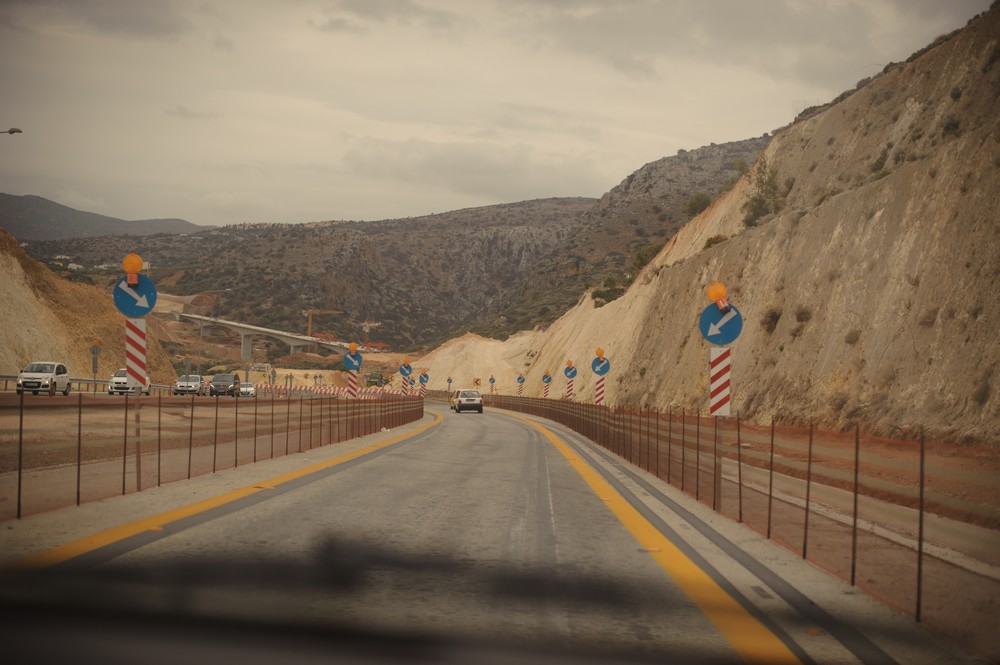Road-tripping through Crete is a beautiful thing. And maybe a little hair-raising at times. Be sure to keep your wits about you and your eyes on the road. You might need to get used to the island driving style at first, but it’s worth it. The west and south of Crete is filled with great views over valleys and the sea.
Speed limits
The speed limit usually seems to be 80 – 90km/h on highways and 40km/h through towns. Generally drivers seem to keep within the speed limit. Perhaps that’s partly due to the complexity of the landscape. Most of the time, there isn’t much traffic either. Although, it is still possible to get stuck behind a truck on a mountain road. When driving through towns and on mountain passes beware of old men with canes and goats on the road. You’ll have to do watch out for lazy dogs, hungry cats and jay-walking tourists too.
Road conditions
Some of the roads in the west and south are in less-than-perfect condition. Every now and again you might come across a sharp drop-off where tarmac ends abruptly. Sometimes highways have bad bumpy patches with occasional potholes. In my experience, these little surprises aren’t worth worrying about. Another thing to be aware of is that there might be cars broken down or temporarily stopped on the roadsides. Pedestrians might also be walking in the road shoulder at any time, day or night.
Hill starts galore
Crete is mountainous. That means you’ll have to be very confident with your hill starts and quickly changing to lower gears around hairpin bends. If you’re a budget traveller, you might opt for a smaller rental car. This is a practical choice as some village roads are very narrow. The downside is a lack of power when you tackle a steep hill and have to rev fairly high to keep moving (most rentals would probably be manual).
Driving style
Like the rest of non-English-speaking Europe, Crete drivers keep right (the driver sits on the left and the gearbox is on the right too). On roads and highways there is usually only one lane going in each direction. Sometimes the road widens to include a shoulder, indicated as a white line on the right.
Democratically, drivers use this shoulder as a second lane. When the shoulder is used for driving in, then the main lane is used for overtaking. So you could have a situation where a two-lane highway suddenly turns into 4 lanes. It can get a little tight, so it’s best not to overtake if someone is doing the same thing heading towards you! All this high-speed overtaking is casually done across a double white line.
Other transport options
Quad bikes seem quite popular and could be a rental option as well. I’m not sure how the price compares. I’ve heard that it’s a good idea for a trip to Balos. The reason is because most car rental companies apparently don’t allow drivers to go on dirt roads (and the road did get quite bad towards the lagoon). However, it’s pretty much unavoidable up keep on tarmac only.
The bus network seems to operate well and can be used for day trips as well. We caught the bus to the start of the Samaria Gorge hike without any issues.
If you’re planning to travel in between port towns, then the ferries are another alternative. Some of the towns in the south don’t have direct road access, so it really might not be worth getting a car if you’re planning to explore Loutro and surrounds. Boat (and car) taxis are also available on request.



